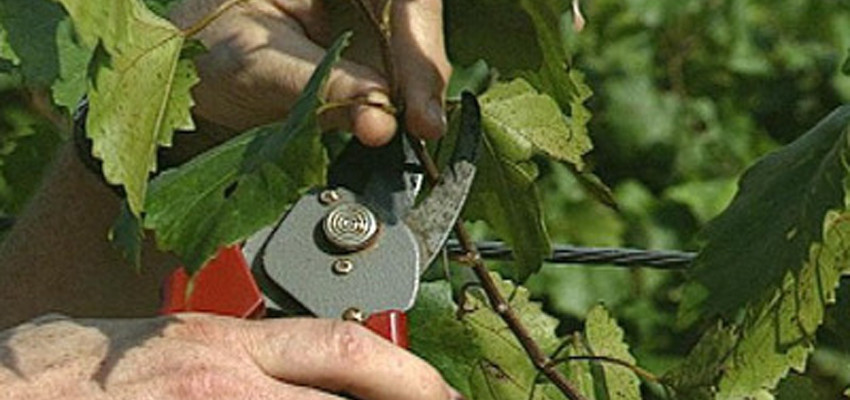
Be sure to check out our full line of pruning products!
Arms. The main branches or extensions of the trunk.
Bud. The slightly enlarged portion in the node region of a cane from which shoots grow.
Canes. Shoots that are mature and have attained all or most of their full length. They may be devoid of leaves and dormant. Dormant canes are previous season’s annual growth.
Capacity. The degree of a vine’s ability to produce fruit and wood.
Disbudding. The removal of swollen buds or young shoots less than 1 inch long.
Fruiting wood. Canes or spurs that are selected for their size and quality and cut back to bear the current year’s crop.
Head. The part of the trunk, usually at the tip, from which branches or arms grow.
Internode. The portion of a shoot or cane between two nodes.
Laterals. The side branches of a shoot or cane.
Node. The joint or swelling on a shoot or cane where buds and leaves are found.
Old Wood. Wood on any part of a vine older than one year.
Pinching. The removal of the growing tip of a shoot by pinching between thumb and finger.
Pruning. The removal of excess parts of a vine above ground– canes, shoots, and leaves.
Renewal spur. A spur that produces shoots for the next year’s fruiting canes or spurs.
Shoots. The new green growth that develops from buds during the growing season and matures to form canes.
Spur. The basal portion of a cane after it is cut back to a length of 1 to 4 buds. ( The basal bud near the point where the cane joins an arm is not counted.)
Suckers. Shoots growing from below the surface of the ground.
Thinning. The removal of flower clusters, immature fruit clusters, of their parts.
Training. The direction or form given to a young vine as it grows, usually by attaching it ti a mechanical support.
Trunk. The main body or stem of a vine.

